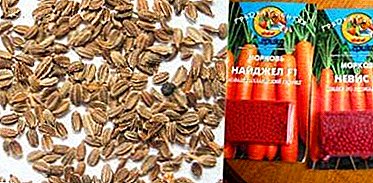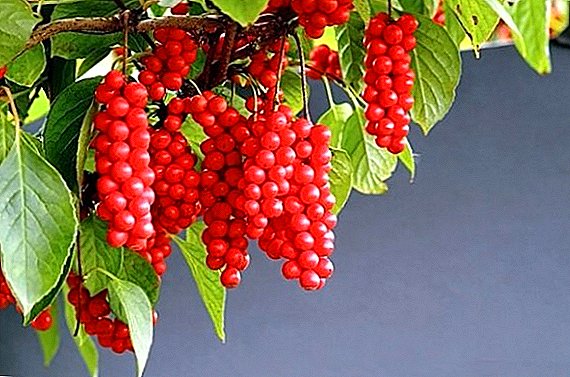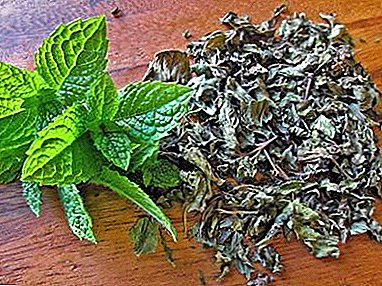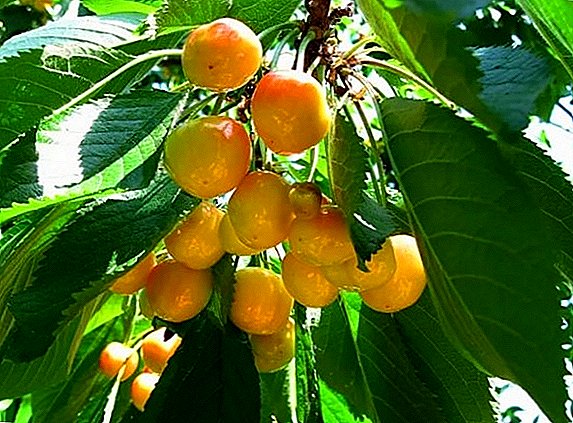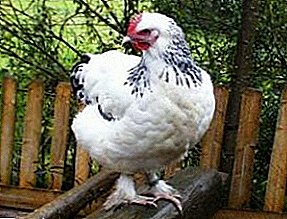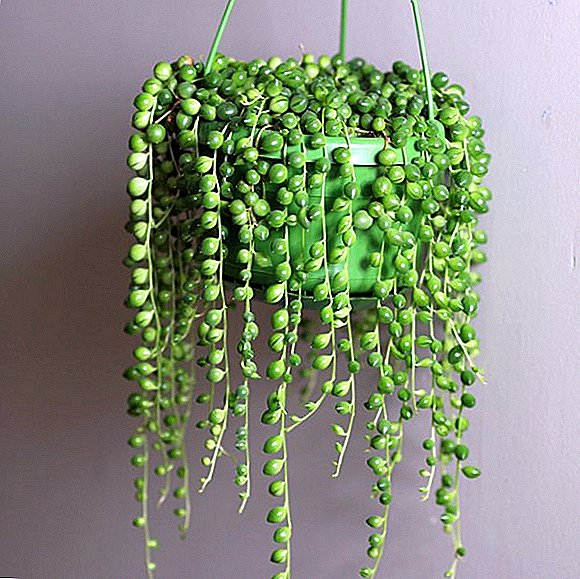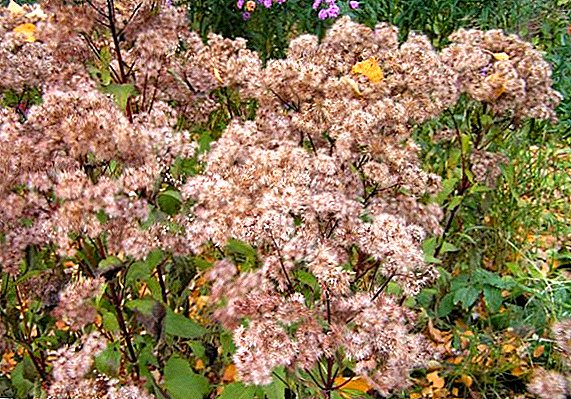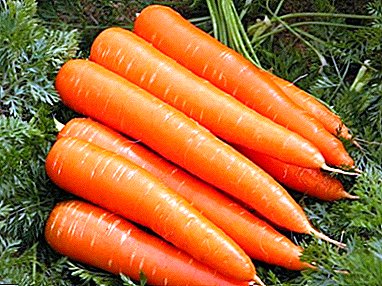
The lagoon is a carrot variety ideal for areas with a short summer. Root crops quickly ripen and have time to fully develop all the characteristics laid down in them by the breeders, including the accumulation of useful trace elements.
This article will discuss the distinctive features, advantages and disadvantages of this hybrid, as well as the peculiarities of its cultivation and harvest.
You will learn how to choose a place for planting and prepare the soil, how planting, watering and feeding are carried out, as well as what possible problems in growing can arise and how to solve them.
Detailed description and description
Appearance
The botva of the plant has leaves of a characteristic carved needle shape and a bright green color. Root crops reach an average of 20 cm, at the time of ripening leveling in size, acquiring the same rich orange color and form in the form of an even cylinder with a short tip. The core of the fruit is very small, or it is completely absent.
What sort is it?
The variety is early ripe. The first root crops can be removed within 60 days after germination. The main harvest is three months later.
Amount of fructose and beta carotene
The content of fructose is 0.7 g per 100 grams of vegetable, beta-carotene - 1.1 mg in terms of the same amount of product.
Landing time

Sometimes practiced sowing for the winter.
Thus, the seeds can get enough moisture at the time of germination.
- Spring planting is carried out in late April - early May.
The main condition for this is the heating of the soil to +9 degrees.
- Late planting of seeds, when the temperature is established at the level of +16 +22 degrees, will guarantee the fruit intense color.
Seed germination
Seed germination is very high and approaches 100%. Planting material does not require pre-soaking before planting.
The average weight of a root
The average weight of a root variety Laguna is 60-90 grams.
Yield
The lagoon allows you to collect from 1 ha to 700 kg of root crops. The yield of the variety is consistently high and can change for the worse only if after seed germination the soil temperature dropped to -1 degree.
Appointment and keeping quality
The grade is suitable for the fresh use, freezing, production of juice and various conservation. Used for cooking all kinds of dishes.
With proper conditions, good quality, carrots can be stored for up to five months.
Cultivation regions
The variety is suitable for cultivation in almost all countries of the former CIS, regardless of the climatic zone. Culture feels best in a temperate climate zone.
Where is recommended to plant?
The grade the Lagoon is used for cultivation in greenhouses, hotbeds and on an open ground.
Resistance to diseases and pests
Breeders laid a hybrid of high resistance to viruses and diseases of fungal origin. With competent agricultural technology, the culture is practically not subject to attacks by harmful insects.
Ripening
Eat root vegetables can be after 80-85 days after planting. Full aging period 120 days. With the observance of agrotechnics, crops can be harvested already 60 days after the emergence of shoots and the crop is harvested in several passes.
The soil
 For the favorable development of the Laguna variety, clay-sandy soil is necessary, in which the dust part prevails.
For the favorable development of the Laguna variety, clay-sandy soil is necessary, in which the dust part prevails.
Also, the variety feels good in peatlands. The acidity level of the soil should not be greater than pH 6-6.5. Fertilizers must be applied before planting.
If sowing is planned for winter, then it should be phosphorus compounds. In the spring, just before planting, nitrogen-containing fertilizers. In the fall - potash supplements.
Frost resistance and transportability
The variety belongs to heat-loving and does not tolerate a drop in temperature below -1 degrees. This can lead to the loss of landings or to a significant slowdown in the development of culture.
The lagoon is great for transportation.
Manufacturability for farms and peasant farms
The variety can be considered high-tech. This is due to almost one hundred percent germination of seeds, the ability of the variety to form even fruits of the same size and to give friendly high yields. At the same agrotechnology culture is very simple, it is unpretentious and has a high resistance to disease.
Breeding history
Laguna F1 was bred on the basis of the Nantes-4 variety in 2007. Works on selection were carried out in VNIISSOK.
What is the difference from other types of vegetables?
- Variety of sowing options. It can be early, middle and near winter.
- High content of potassium.
- The possibility of repeated harvest.
Advantages and disadvantages
Advantages:
- Simple farming.
- High seed germination.
- Resistance to most diseases.
Disadvantages:
- Not suitable for long term storage.
- Requirements for the composition of the soil.
Features of growing
 At the chosen time (beginning of April, end of May or near winter), beds are prepared in which grooves are laid out, with a depth of no more than 2 cm, at a distance of about 15 cm from each other.
At the chosen time (beginning of April, end of May or near winter), beds are prepared in which grooves are laid out, with a depth of no more than 2 cm, at a distance of about 15 cm from each other.
The soil should be watered well with separated warm water. Planting material is sown directly in the ground. Seeds germinate in about two weeks, but if they receive a stable heat - the period is reduced to 10 days.
The first watering is carried out after 10-14 days from the moment of the appearance of the first shoots at the rate of 7-10 liters per square meter. Further irrigation is carried out with the same interval, while tracking, soil moisture.
Harvesting and Storage
Harvesting can be carried out in several stages. - from 60 to 120 days after germination. Root vegetables are carefully removed and cut the tops, leaving 3-4 centimeters. Carrots varieties Laguna can be stored for five months.
Diseases and pests
The Laguna F1 variety is resistant to carrot-specific diseases, but insufficient preventive measures can still lead to infection.

- Septoria. The disease develops in conditions of high humidity, most often in a greenhouse or greenhouse. Manifested in the form of whitish dry spots on the leaves, closer to the base of the stems. The course of treatment involves spraying the plants with Bordeaux mixture and leveling the microclimate in the greenhouse.
- Black rot It affects plants in respect of which the irrigation regime was violated. Excessive moisture leads to black spots on the roots. To prevent the development of disease, seeds are transplanted with antiseptic preparations before planting. In the process of growing it is necessary to constantly monitor the level of soil moisture.
The harmful insect, most often attacking carrots - aphid. The pest sucks the juice from the leaves of the leaves, negatively affecting the growth and development of the plant, as a result of which it dies. In order to prevent negative effects, at the first signs of affection with aphids, plantings are treated with insecticidal preparations.
Various growing problems and solutions
The optimal level of occurrence of water when planting varieties Laguna - 0.8 - 2.5 meters. If the level is less, the solution is to plant seeds before winter to eliminate possible leaching during spring planting.
Inadequately prepared soil can lead to the curvature of the fruit and the complete loss of its presentation. To avoid this, before sowing it is necessary to carry out deep plowing of the soil.
Similar varieties
- Nantes-4 and Nantes-14 - similar to Laguna, the first root crops can be eaten within two months after germination.
- Losinoostrovskaya-13 - also gives high yields.
- Rex - also, like Laguna, is an early maturing variety and has juicy root crops with a poorly expressed core.
Laguna F1 is a high-yielding variety with excellent taste, having quite a simple agricultural technique. It is excellent for breeding at private farmsteads and, due to unpretentiousness, allows to get decent yields even for those who are engaged in carrot cultivation for the first time.


